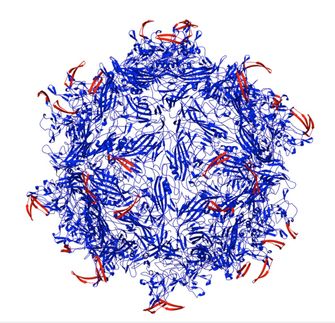Role of infliximab in treating Kawasaki disease
Antibody treatment helps children with dangerous heart disorder
Kawasaki disease (KD) is a severe childhood disease that many parents, even some doctors, mistake for an inconsequential viral infection. If not diagnosed or treated in time, it can lead to irreversible heart damage.
Signs of KD include prolonged fever associated with rash, red eyes, mouth, lips and tongue, and swollen hands and feet with peeling skin. The disease causes damage to the coronary arteries in a quarter of untreated children and may lead to serious heart problems in early adulthood. There is no diagnostic test for Kawasaki disease, and current treatment fails to prevent coronary artery damage in at least one in 10 to 20 children and death in one in 1,000 children.
Between 10 and 20 percent of patients with KD experience fever relapse following the standard therapy with a single infusion of intravenous immunoglobulin (IVIG) and aspirin. It is known that IVIG resistance increases the risk of heart damage, most commonly a ballooning of the coronary arteries called aneurysms. These children require additional therapy to interrupt the inflammatory process that can lead to damage of the coronary arteries.
A study led by physicians at the University of California, San Diego School of Medicine and Rady Children's Hospital-San Diego looked at intensification of initial therapy for all children with KD in order to prevent IVIG-resistance and associated coronary artery abnormalities by assessing the addition of the medication infliximab to current standard therapy. The results of their study will be published in the online issue of the medical journal Lancet.
Tumor necrosis factorα(TNFα) is a molecule made by the body that plays a role in the development of inflammation in KD; therefore, treatment with a TNFa antagonist is a logical therapeutic intervention, according to the researchers. Early experience with infliximab – a monoclonal antibody that binds TNFa – showed promising results. A Phase 1 trial in children with KD and persistent fever following standard therapy found no infusion reactions or serious adverse events, and subsequent studies suggested that infliximab led to faster resolution of fever and fewer days of hospitalization than a second IVIG infusion.
The UC San Diego researchers conducted a trial of 196 subjects at two centers – Rady Children's Hospital-San Diego, a research affiliate of UC San Diego School of Medicine, and Nationwide Children's Hospital in Columbus, Ohio – to assess whether infliximab could reduce IVIG treatment resistance.
"While the addition of infliximab to primary treatment in acute KD did not reduce treatment resistance, it was safe and well-tolerated, achieved a greater reduction in the size of the left coronary artery, and reduced the number of days of fever and laboratory markers of inflammation," said the study's first author, Adriana H. Tremoulet, MD, of the UC San Diego Department of Pediatrics and the UC San Diego/Rady Children's Hospital-San Diego Kawasaki Disease Research Center. "We conclude that use of infliximab is safe in infants and children and that early treatment could help children with Kawasaki Disease with high levels of inflammation or early signs of coronary artery damage."
Most read news
Organizations
Other news from the department science

Get the life science industry in your inbox
By submitting this form you agree that LUMITOS AG will send you the newsletter(s) selected above by email. Your data will not be passed on to third parties. Your data will be stored and processed in accordance with our data protection regulations. LUMITOS may contact you by email for the purpose of advertising or market and opinion surveys. You can revoke your consent at any time without giving reasons to LUMITOS AG, Ernst-Augustin-Str. 2, 12489 Berlin, Germany or by e-mail at revoke@lumitos.com with effect for the future. In addition, each email contains a link to unsubscribe from the corresponding newsletter.


















































